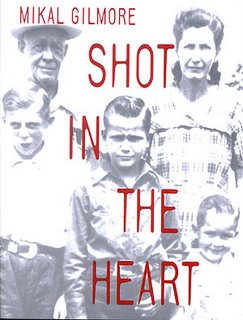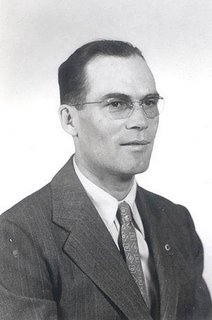Shot In The Heart

I haven't had much time to work on Subtexts #2 since I've been absorbed working towards my show Spring that opens at Ampersand International Arts on January 13th. However, I have had a chance to do some reading over the past few weeks - actually I've made the time, since it's been hard to put this book down. It's Shot In The Heart by Mikal Gilmore. Being such an intense and difficult book to digest (I'm also only halfway through), I'm not going to attempt to summarize it; however, this is from Fiona Webster of Amazon:
"I have a story to tell. It is a story of murder told from inside the house where murder is born. It is the house where I grew up, a house that, in some ways, I have never been able to leave."
Mikal Gilmore is a Rolling Stone writer and the youngest brother of murderer Gary Gilmore, who became, in 1977, the first person to be executed in the United States after a 10-year hiatus, a case that was subsequently recounted in Norman Mailer's The Executioner's Song. This brave and eloquent book is the story that only Mikal Gilmore knows: the violence in multiple generations of his family, what the Gilmore house was like as he was growing up, his relationship with his brother, and his experience of the dramatic events surrounding Gary Gilmore's determination to be executed as planned, without appeal. Shot in the Heart pulls off the rare feat of conveying intense emotion without sentimentality or self-pity. The author's struggle is to set himself apart from the lurid true-crime fraternity of his father and brothers yet remain able to understand why he feels both guilty and lonely over his exclusion from his family's violent history. --Fiona Webster
Part of what's made the book interesting to me is that Bessie Gilmore (Gary and Mikal's mother) was from a Mormon family and the book lays the groundwork of the Gilmore family legacy by providing a history of the Mormon bloodlines and the Mountain Meadows Massacre of 1857.
 My ancestors - the Wilson family, who included patriarch Bradley Wilson and his sons George and Deliverance, were members of the early Mormon settlements that were built in Kirtland, Ohio and Independence, Missouri and led by founder Joseph Smith. Following persecution by the locals they moved on to Nauvoo, Illinois. Though soon they were forced to move again; this time on a much greater trek. They were among the first party of Mormon pilgrims (led by Brigham Young) to travel west and settle in Utah. However, our bloodlines to the Mormon Church ended in the 1920's. Church leaders were proclaiming that the Mormons had never participated in acts of violence. My grandfather Jeff Wilson at the age of 17, challenged his elders by bringing up the Mountain Meadows Massacre. They denied the massacre had ever happened and that if he believed it had, then he ought leave the church. My grandfather's response was: well, alright then. It's possible that my grandfather had had enough of the church and it's hypocrisy; his father Jack and his uncle William were notorious bootleggers in Idaho Falls and when the authorities finally confronted William Wilson in his front yard, he shot and killed the sheriff and was convicted of second-degree murder (I have yet to learn why it wasn't first-degree) and was sentenced to five years in the penitentiary.
My ancestors - the Wilson family, who included patriarch Bradley Wilson and his sons George and Deliverance, were members of the early Mormon settlements that were built in Kirtland, Ohio and Independence, Missouri and led by founder Joseph Smith. Following persecution by the locals they moved on to Nauvoo, Illinois. Though soon they were forced to move again; this time on a much greater trek. They were among the first party of Mormon pilgrims (led by Brigham Young) to travel west and settle in Utah. However, our bloodlines to the Mormon Church ended in the 1920's. Church leaders were proclaiming that the Mormons had never participated in acts of violence. My grandfather Jeff Wilson at the age of 17, challenged his elders by bringing up the Mountain Meadows Massacre. They denied the massacre had ever happened and that if he believed it had, then he ought leave the church. My grandfather's response was: well, alright then. It's possible that my grandfather had had enough of the church and it's hypocrisy; his father Jack and his uncle William were notorious bootleggers in Idaho Falls and when the authorities finally confronted William Wilson in his front yard, he shot and killed the sheriff and was convicted of second-degree murder (I have yet to learn why it wasn't first-degree) and was sentenced to five years in the penitentiary.
So thanks to my grandfather Jeff, I wasn't married at 15 to a man with several other wives, I don't have a house full of kids, and I'm not wearing those legendary underwear.
About the Mountain Meadows Massacre (excerpted from Shot In The Heart):
In September 1857, a wagon train of Arkansas emigrants, known as the Baker-Fancher party, was making its way through southern Utah, en route to California. Unfortunately, they were journeying through the region shortly after the Mormons had received word that federal troops were marching their way. The intent of these troops, Brigham Young had decided, was hostile - he had long been expecting a showdown between the Saints and the nation that had expelled them - and as a defense strategy, Young had enlisted several of the local Indian tribes to help repel the U.S. invasion.
When the Baker-Fancher party arrived at the southern outpost of Cedar City, the Mormons in the region viewed the group with frightened suspicion: Perhaps the emigrants were, in fact, an advance party for the U.S. troops. It hardly helped matters when a few of the emigrants - later dubbed the "Missouri Wildcatters" - boasted that they had been among the militiamen who had slaughtered Joseph Smith a few years before and that, as soon as they reached California, they would raise forces to come back and help exterminate the surviving Utah Saints. The Mormons that these Missourians chose to infuriate were Mormons who remembered well what it was like to be driven from their homes by violent mobs, and they decided that these people would not leave their land to bring back new armies to kill them. They held a meeting and discussed whether to treat the emigrants - who were resting for a few days at a watering hole known as the Mountain Meadows - as enemies of war. The Mormons dispatched a messenger to Brigham Young in Salt Lake City, asking his counsel. Young replied that these visitors were definitely not a part of the federal campaign, and that they should be allowed to pass unharmed. By the time the messenger arrived back in Cedar City a few days later, nearly the entire Baker-Fancher party had been slaughtered. When Brigham Young heard about the massacre, he wept over the realization that his people could commit such an atrocity.
The news of the Mountain Meadows Massacre spread rapidly, and soon became a chief weapon in the U.S. war against the Mormons. Finally, eighteen years after the event, the man who had been reported to have been the commander of the slaughter - a prominent Mormon named John D. Lee, also a famed member of the Danites - was arrested, and in the course of two trials, Utah and the nation began to get a better picture what had really happened at Mountain Meadows. Lee had been the area's Indian agent at the time, and according to the accounts of local tribesmen, he had approached them with reports that the Baker-Fancher group was poisoning the Indian's stock and planning greater violence. Lee himself testified that it was the Indians who had felt injured by the actions of the emigrants, and that they had threatened Lee that if he did not help deliver the wagon train party to the Indians' justice, then the Mormons would be endangered as a result. In any event, shortly after the messenger had left to consult Brigham Young, a group of Mormons and Indians carried out an attack on the Baker-Fancher party. The battle went on for days, and as a way of ending it, Lee told the tribesmen that if they would allow the women and children to escape unharmed, the Mormons would allow the slughter of the migrant men. The Indians, Lee said, agreed, and he then convinced the Baker-Fancher group that if its survivors would surrender, they would be allowed to leave the area. Lee marched the male emigrants out of the encampment first, and a signal was given to the Indians to begin their killing. But as soon as the slaughter started, the assailants lost control, and when the bloodbath was over, over one hundred men, women, and children lay dead in the Utah dirt. Many of them had been killed with unnecessary brutality.
Lee was found guilty for his part in the slaughter by and all-Mormon jury and was sentenced to death.